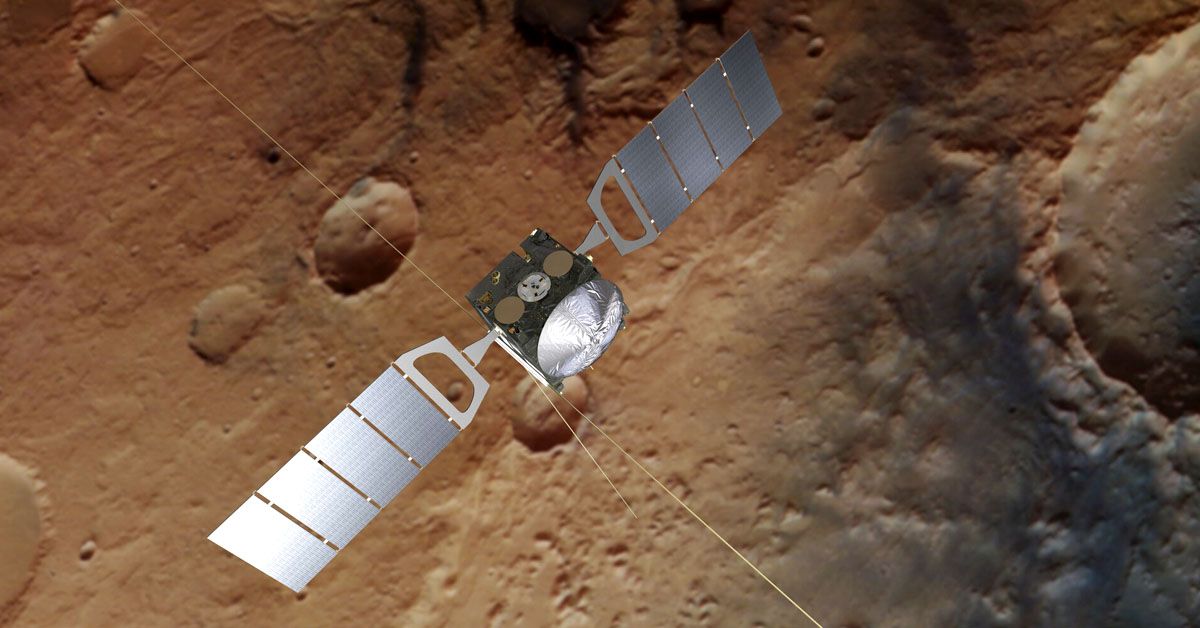In 2003, a journey began that would rewrite our understanding of our neighboring red planet, Mars. The Mars Express orbiter, a beacon of the European Space Agency's (ESA) scientific prowess, ventured into the Martian orbit.
Since then, it's been ceaselessly unveiling the mysterious landscapes of Mars, presenting a tale of an extraterrestrial world millions of miles away. This year, we stand at the 20th anniversary of this phenomenal mission, a period marked by breakthrough discoveries and tireless exploration.
The High-Resolution Stereo Camera (HRSC) aboard this spacecraft has been our eyes into the Martian world for two decades. It has captured the rugged mountains, sweeping plains, and mysterious dunes of Mars in detail never seen before.
Understanding the High-Resolution Stereo Camera (HRSC)
The HRSC has been the primary tool for photographing and mapping Mars's diverse landscape. Its unique capabilities go far beyond just taking pictures, it captures images in four color and five panchromatic channels.
This feature allows it to detail the Martian surface in color and in three dimensions. You can think of the HRSC like a pair of eyes, but much more powerful. These "eyes" not only see things as we do but also map out the surface, almost like feeling the contours and textures, but from afar.

Such advanced technology needs an equally competent team to handle it. At the helm is the HRSC team based at the German Aerospace Center (DLR) in Berlin. This group of dedicated scientists and engineers is the brains behind the HRSC.
They meticulously plan each shot and acquire the high-altitude images necessary to create the detailed maps of Mars that we marvel at.
One of the key figures in the team is Dr. Greg Michael, an astrophysicist, and radio astronomer from Freie Universität Berlin. Dr. Michael played a crucial role in bringing out the true colors of Mars.
He developed a unique color model and was instrumental in processing the mosaic of images obtained from the HRSC. We might not have had such a vivid and accurate picture of the Martian landscape without his expertise.
Deciphering Mars Through Mosaic Images
If you've ever worked on a jigsaw puzzle, you know the thrill of piecing together individual parts to form a grand picture. Now, imagine doing the same thing with photos of Mars taken from space!
For the 20th anniversary of the Mars Express mission, a special treat was shared with the world: global color mosaic images of Mars. These photos were taken by the High-Resolution Stereo Camera (HRSC) and streamed live from the orbiter to our home planet, Earth.

A mosaic image is created by piecing together many individual photos, similar to a jigsaw puzzle. In this case, 90 unique images were used. They were taken from altitudes ranging from 4,000 to 10,000 kilometers above Mars.
When combined, these images cover an area roughly 2500 kilometers in diameter. In terms of resolution, this means every pixel in the image represents a real-world area of 2 kilometers on Mars.
Some areas even show the Martian surface at the highest possible resolution of 12.5 meters per pixel!
But what's the benefit of these color mosaic images? Well, they offer more than just a pretty view. The colors in these images reveal the composition of Mars.
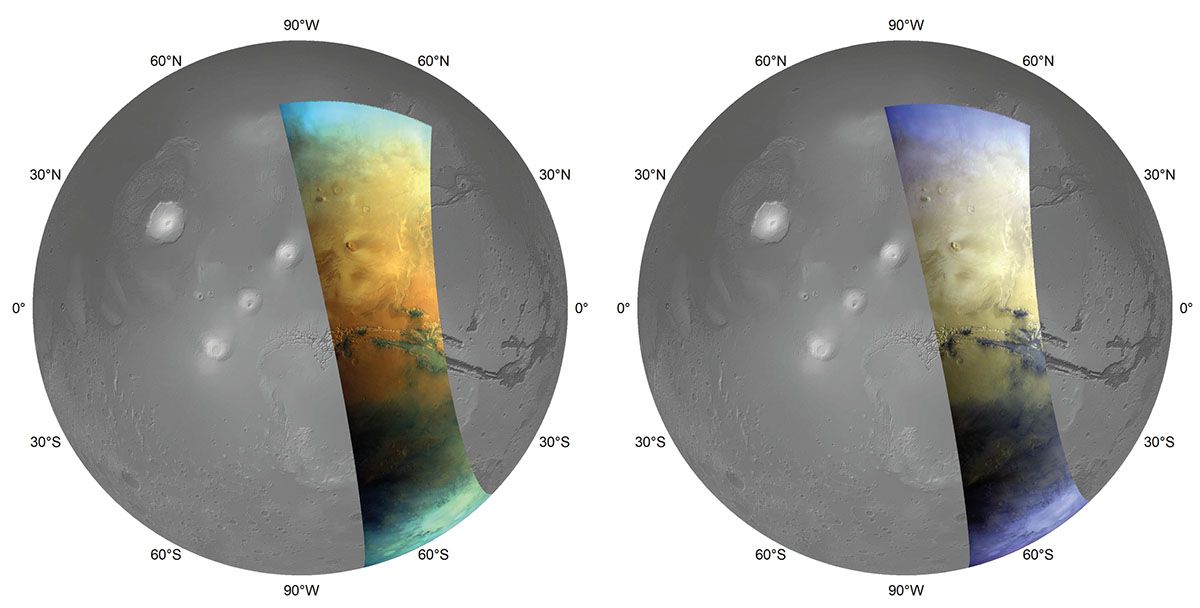
Different substances reflect light in different ways, resulting in various colors. For instance, the reddish areas of Mars show the presence of oxidized iron. Darker regions can hint at volcanic sands, and blue tones suggest fields of barchan dunes.
Now, here's an interesting twist. Mars' atmosphere changes all the time, and this affects how we see the planet's surface. To overcome this issue, the HRSC team used a new technique to preserve the colors and details of the surface.
Thanks to this technique, we can also observe atmospheric phenomena such as clouds and fog layers within Martian canyons and low-lying areas.
These high-resolution mosaic images are a valuable tool in the study of Mars. Each color variation, each pixel, carries essential data that can help scientists decipher the secrets of this alien world.
Implications of Geological Features on Mars
Remember when you were a kid, making sandcastles and watching the waves wash them away?
Well, something similar happened on Mars billions of years ago, but on a much bigger scale. Geological features on Mars such as volcanic sands and fields of barchan dunes offer scientists exciting clues about the planet's history and composition.
Let's start with the volcanic sands. In the high-resolution mosaic images captured by the HRSC, some areas appear darker, showcasing hues of blue, gray, and black.
These areas correspond to vast expanses of volcanic sands. Now, here's the interesting part - some of these sands show signs of weathering due to water flow.
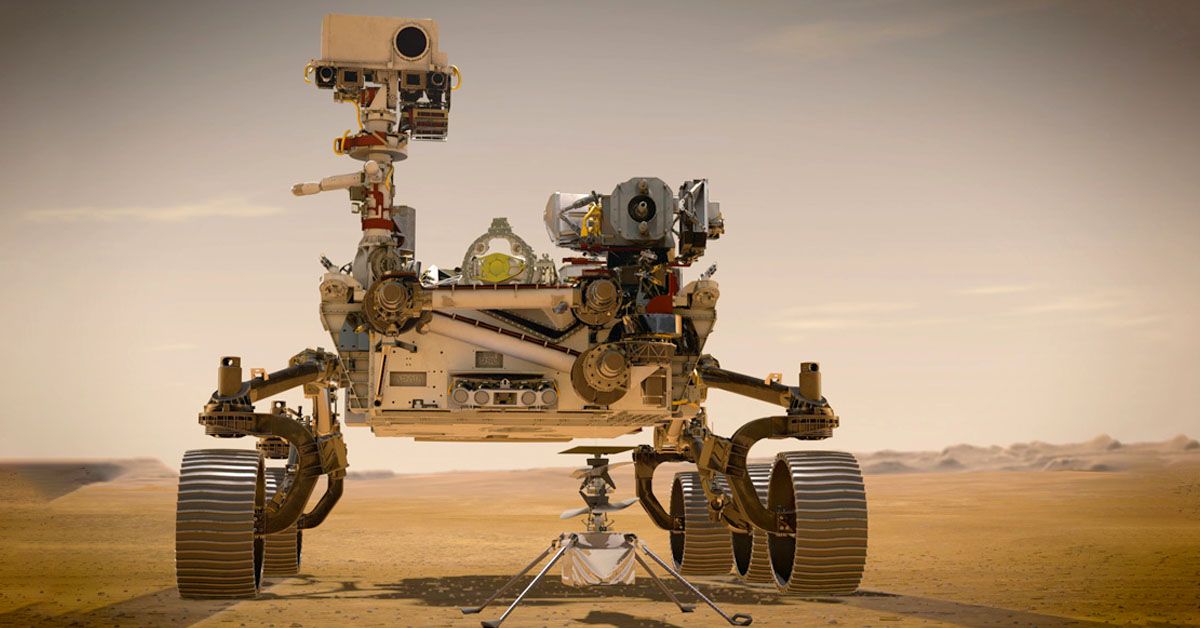
Yes, you heard it right! Water on Mars. Scientists believe that these patterns were carved out billions of years ago when water used to flow on the Martian surface.
Next up are the fields of barchan dunes. If you're wondering what barchan dunes are, think of them as small hills of sand shaped by the wind.
They form a beautiful, yet complex, pattern that can provide valuable information about Mars's wind patterns and climate history.
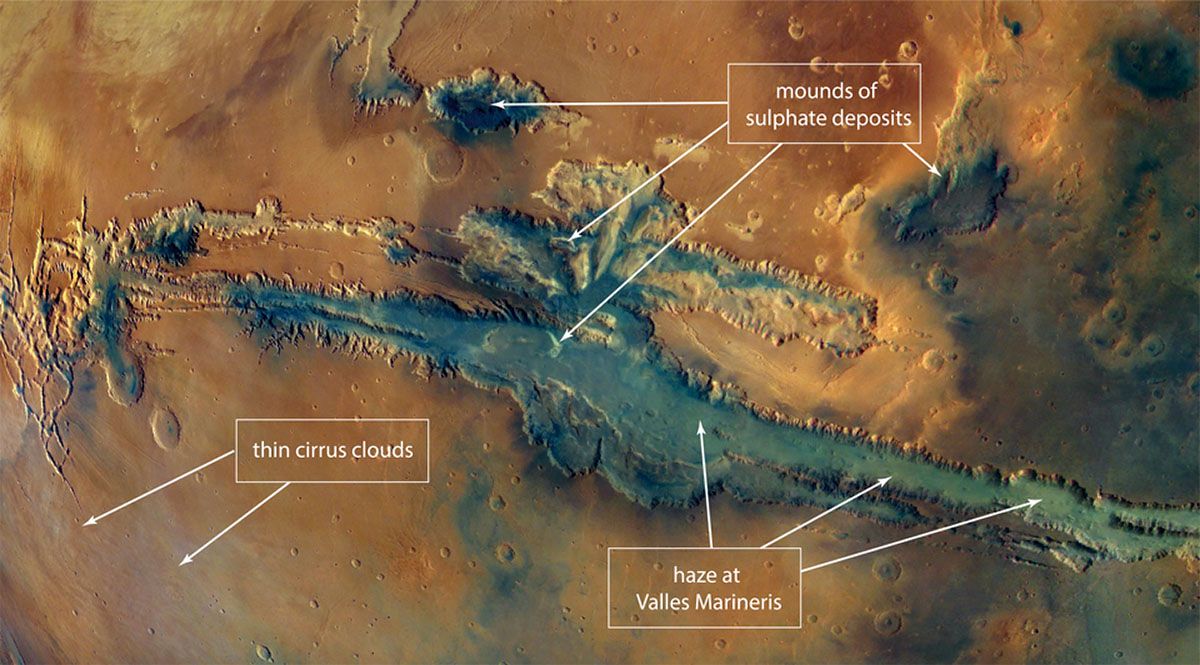
Besides these features, the mosaic images also highlight different minerals that makeup Mars's crust. The most common ones are clays and sulfates. These minerals are easily identifiable in the images due to their brightness.
Other notable minerals include calcium sulfate (also known as gypsum) and magnesium sulfate (kieserite). The most exciting find? These minerals are usually found within the Valles Marineris canyon system, and despite being covered by a thin layer of darker sand, they remain visible due to the excellent color resolution of the HRSC.
The presence of these minerals, particularly clays, and sulfates, is a significant discovery. Why? Because these minerals usually form in the presence of water.
This suggests that Mars was once a watery world, much different from today's cold and dry planet. This discovery fuels further exploration and increases the possibility of finding signs of past life on Mars.
Success and Future of Mars Express Mission
When you aim for the stars (or in this case, Mars), you achieve remarkable things. One such achievement is the Mars Express Mission, a project that has been beaming back invaluable data about Mars for nearly 20 years.
The most significant contributor to this mission's success? The High-Resolution Stereo Camera is a piece of equipment that has dramatically exceeded all expectations.
Back in 2003, when the Mars Express orbiter began its journey, the HRSC was initially planned to function for just one Martian year.
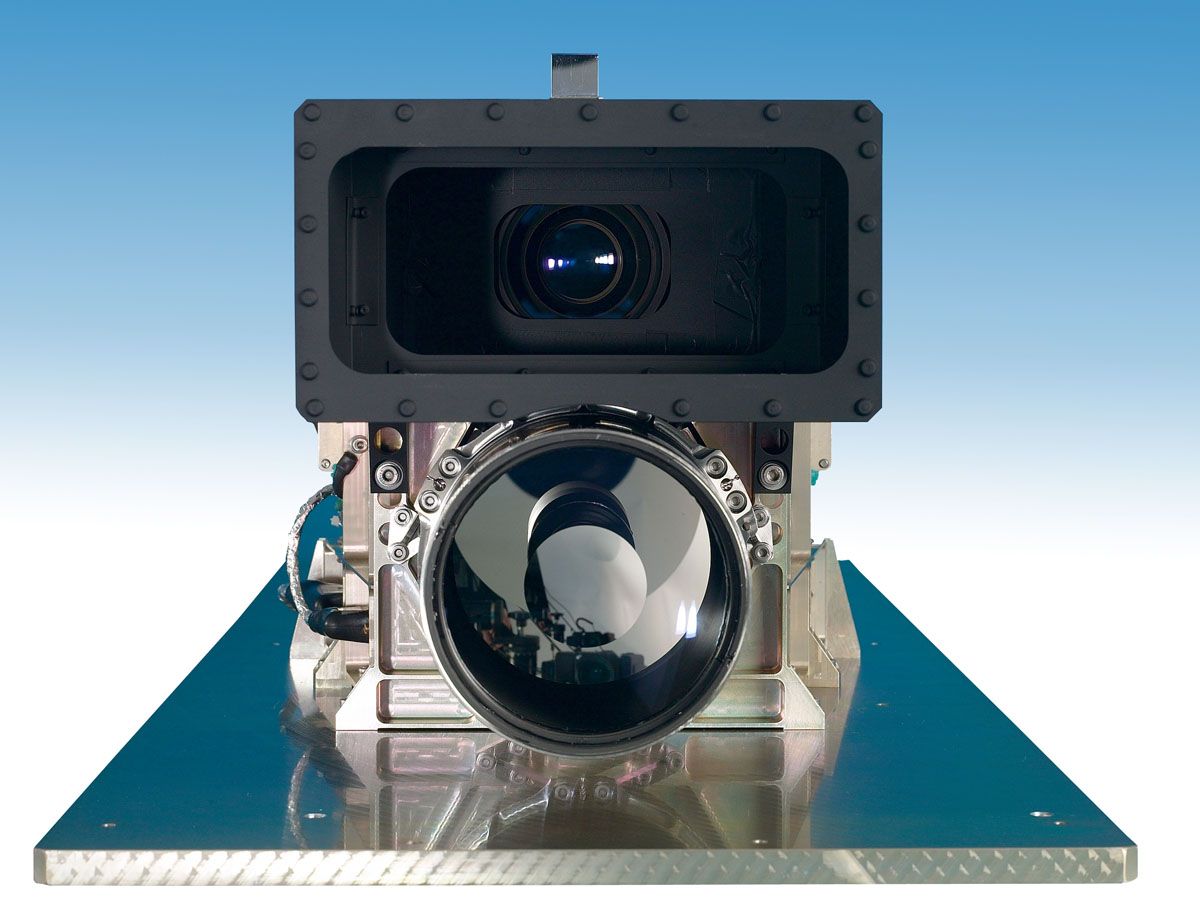
However, its impressive performance led to the mission being extended multiple times. As a result, the Mars Express orbiter, with HRSC aboard, remains in action today, mapping the Martian surface in incredible detail.
By October 19th, 2023, the Mars Express will complete a staggering 25,000 elliptical orbits of Mars, an accomplishment only surpassed by NASA's 2001 Mars Odyssey. This makes the Mars Express one of the longest-serving spacecraft to study the Red Planet.
The future of the Mars Express Mission looks equally promising. The mission has now been extended until the end of 2026, offering plenty more opportunities to capture Mars's secrets in stunning detail.
Upcoming Scientific Release
While we eagerly anticipate more awe-inspiring images from the HRSC, the mission's scientific team is not resting on their laurels.
An upcoming scientific paper is set to detail the team's findings from their extensive exploration of Mars, offering fresh insights into the Martian environment.

In addition to the paper, a georeferenced dataset, created from high-altitude mosaic images, will soon be available through the European Space Agency's guest storage facility.
This dataset will provide a detailed global view of Mars, allowing scientists around the world to delve into the data and make new discoveries about our fascinating neighbor.
It's an exciting time for space exploration and scientific discovery. The Mars Express Mission, with the invaluable help of the HRSC, continues to open new horizons, sparking our curiosity and deepening our understanding of the universe.
Sources: esa.int
